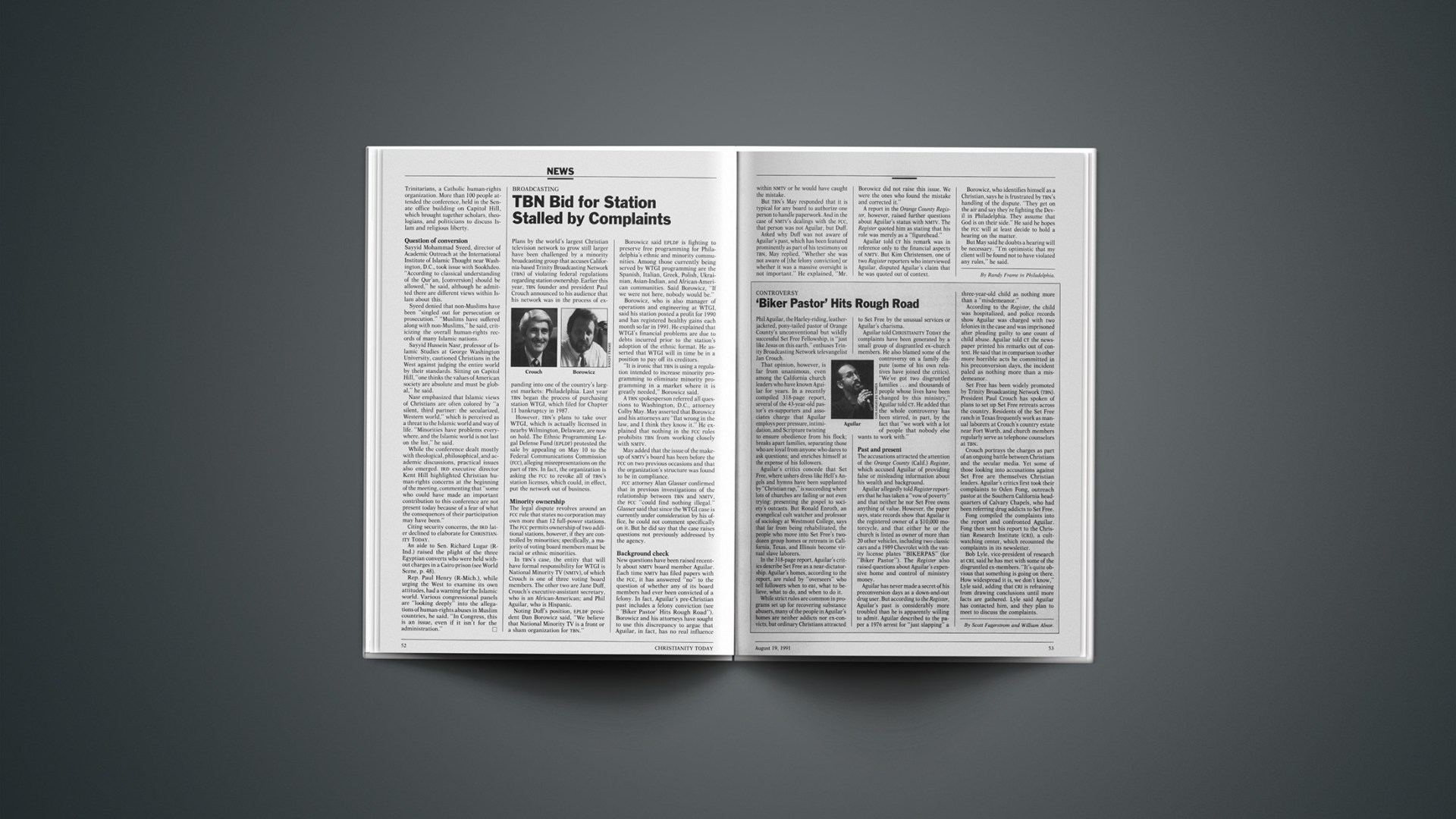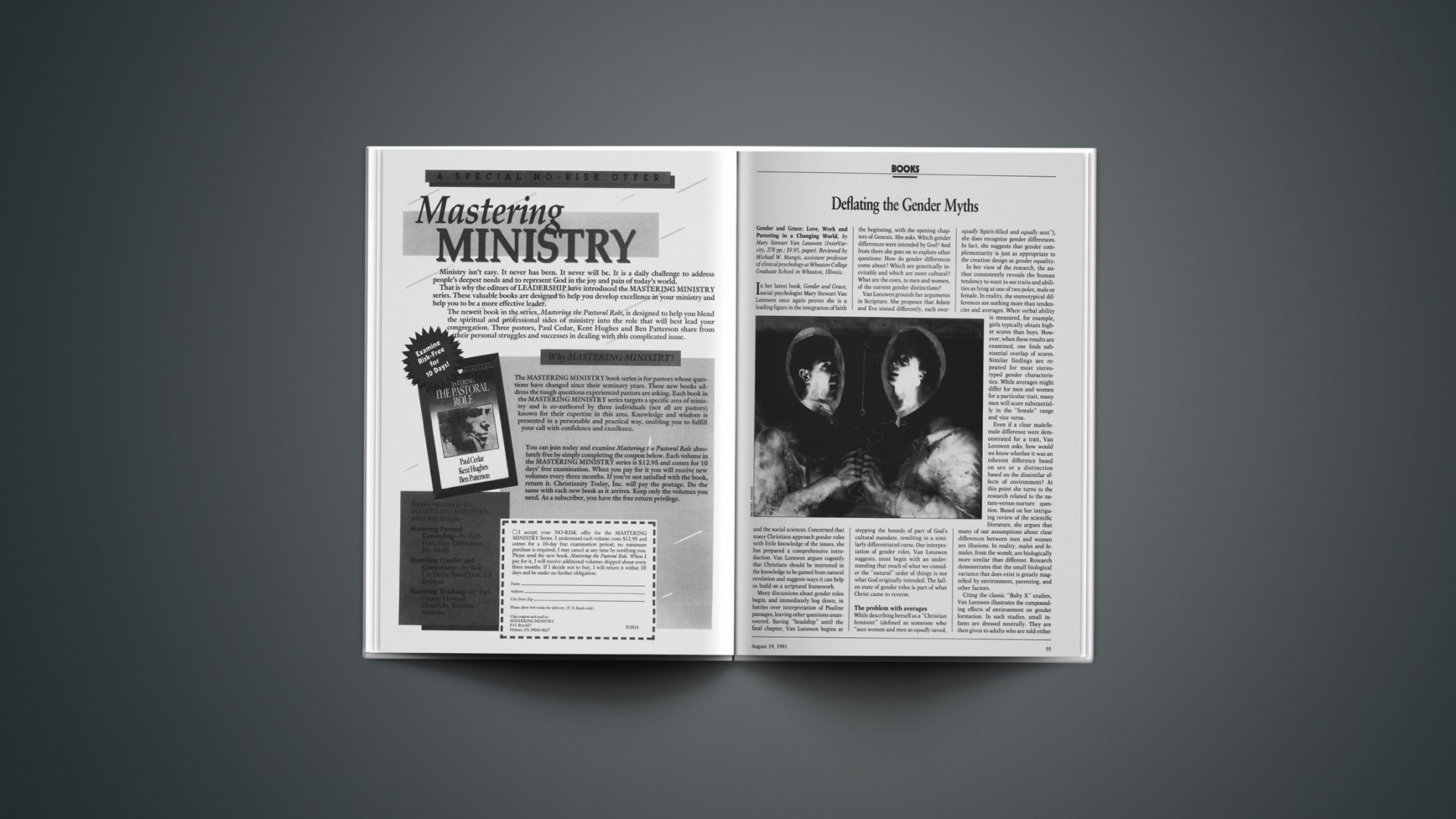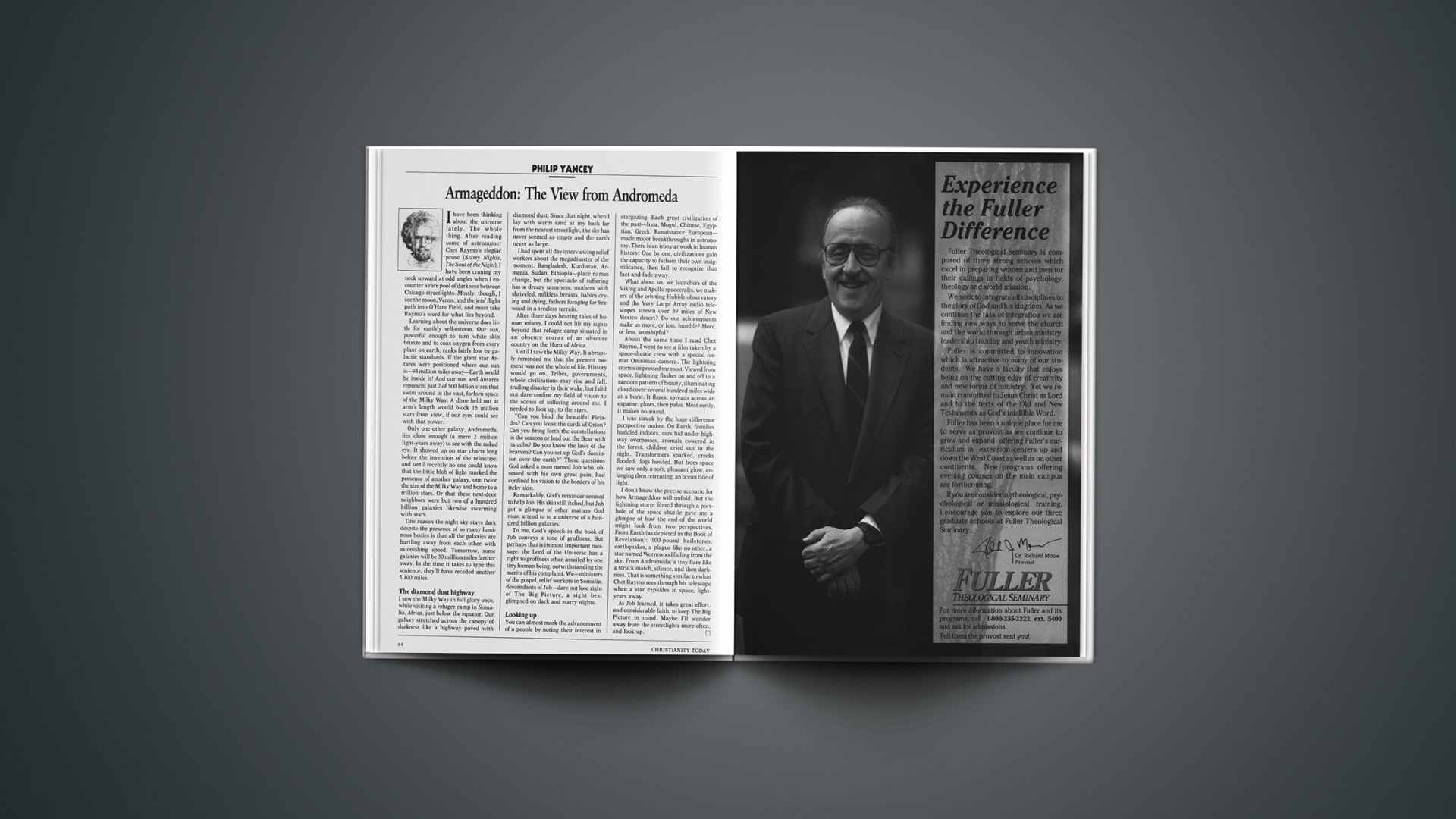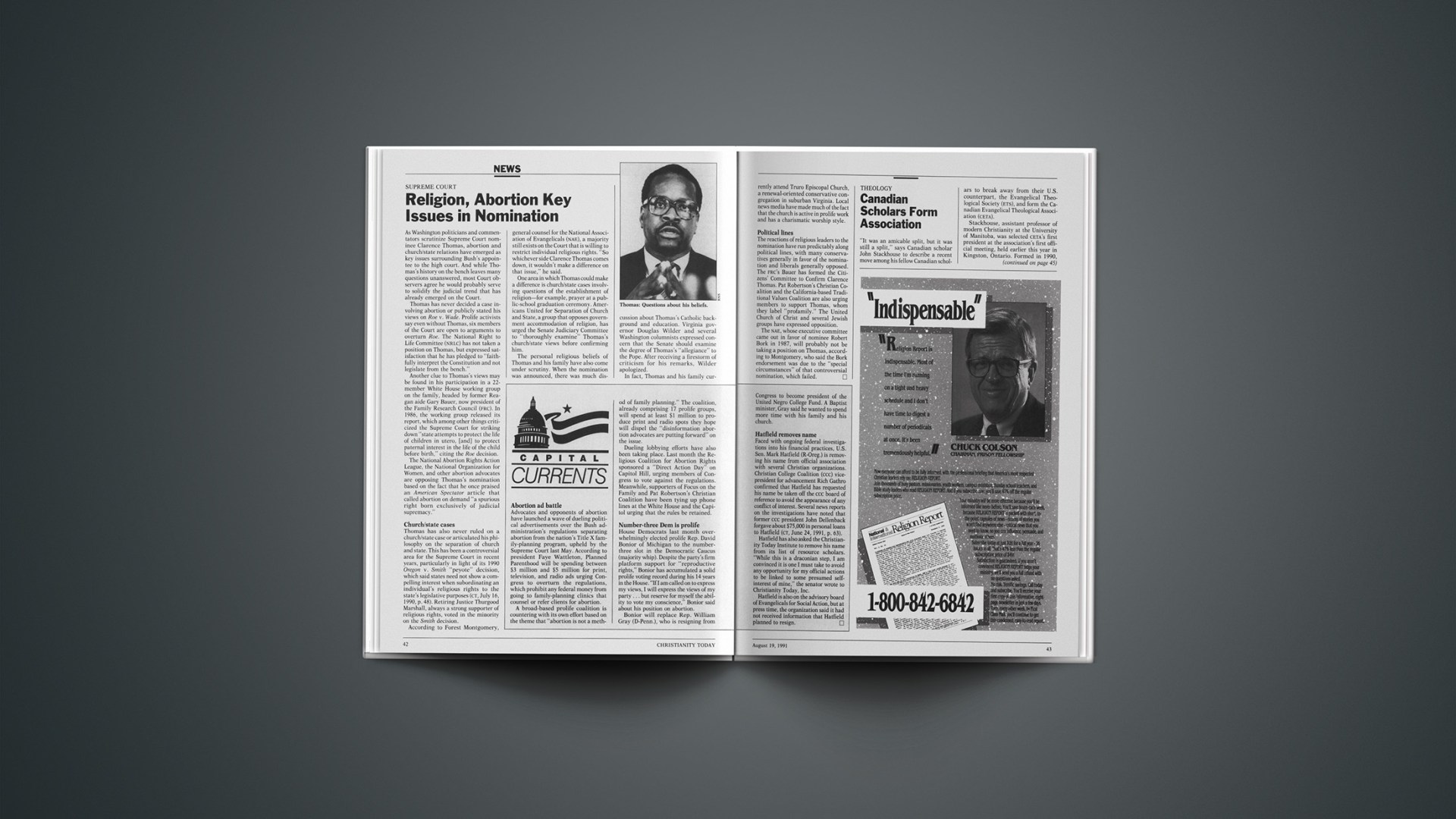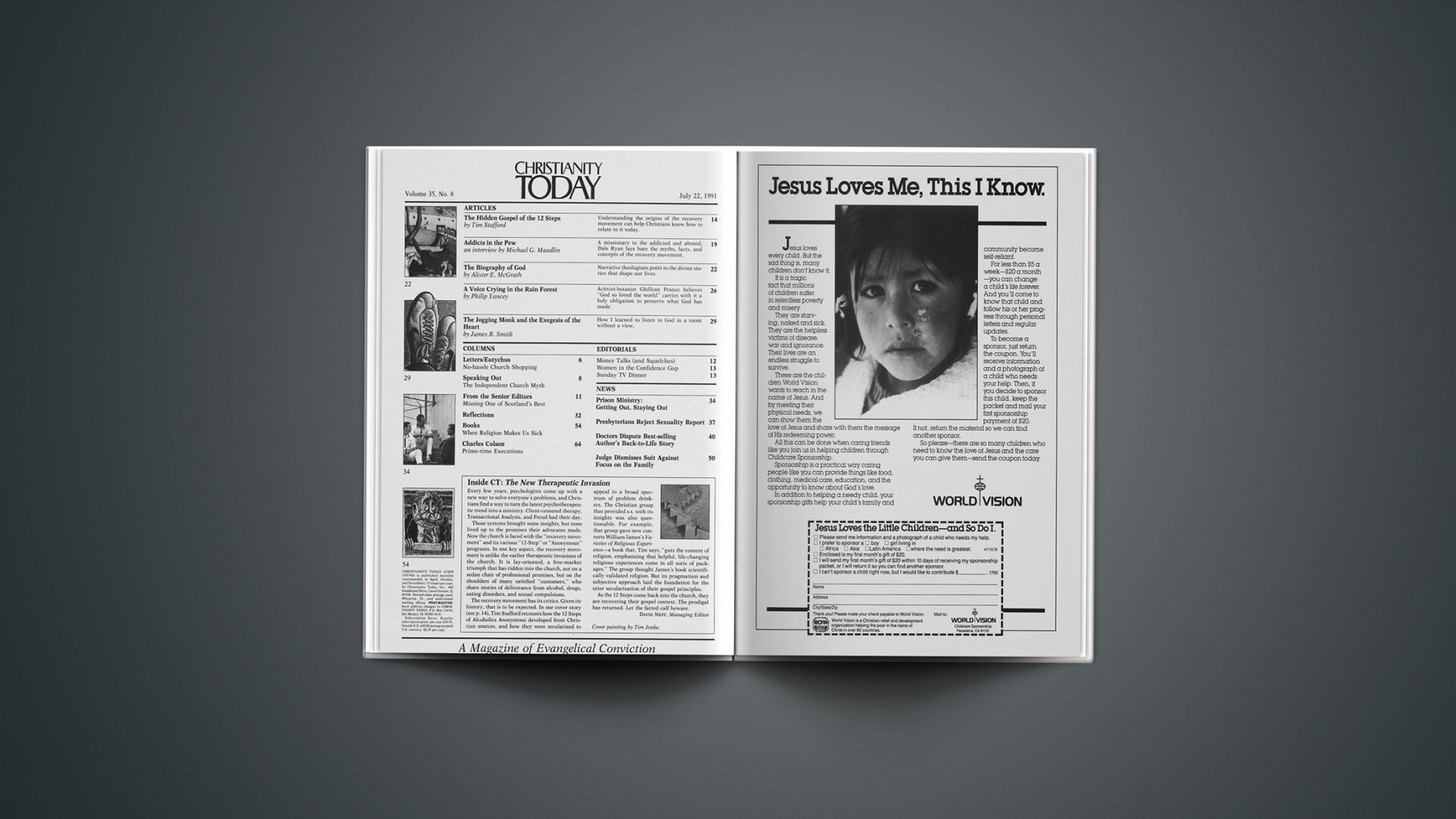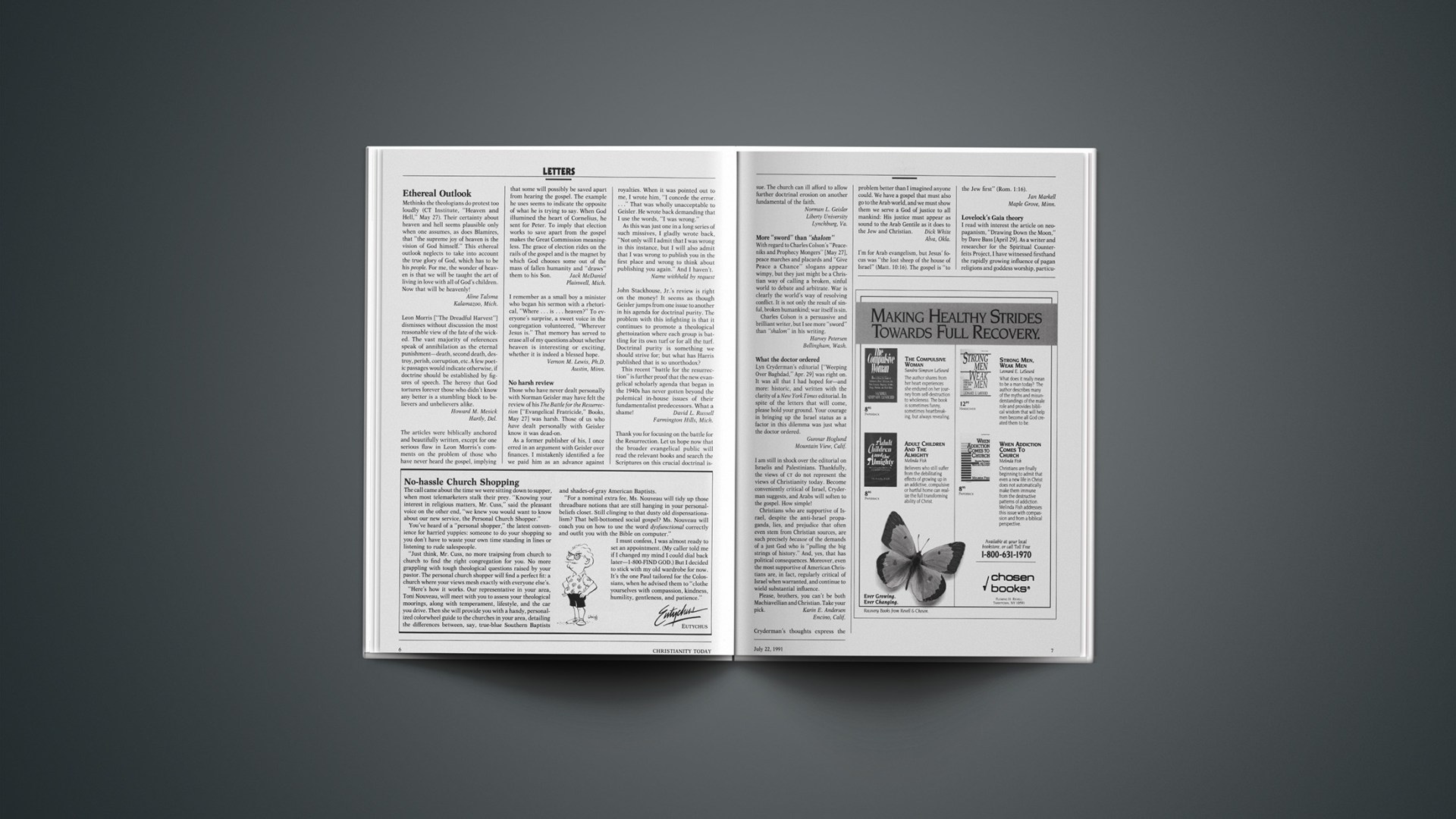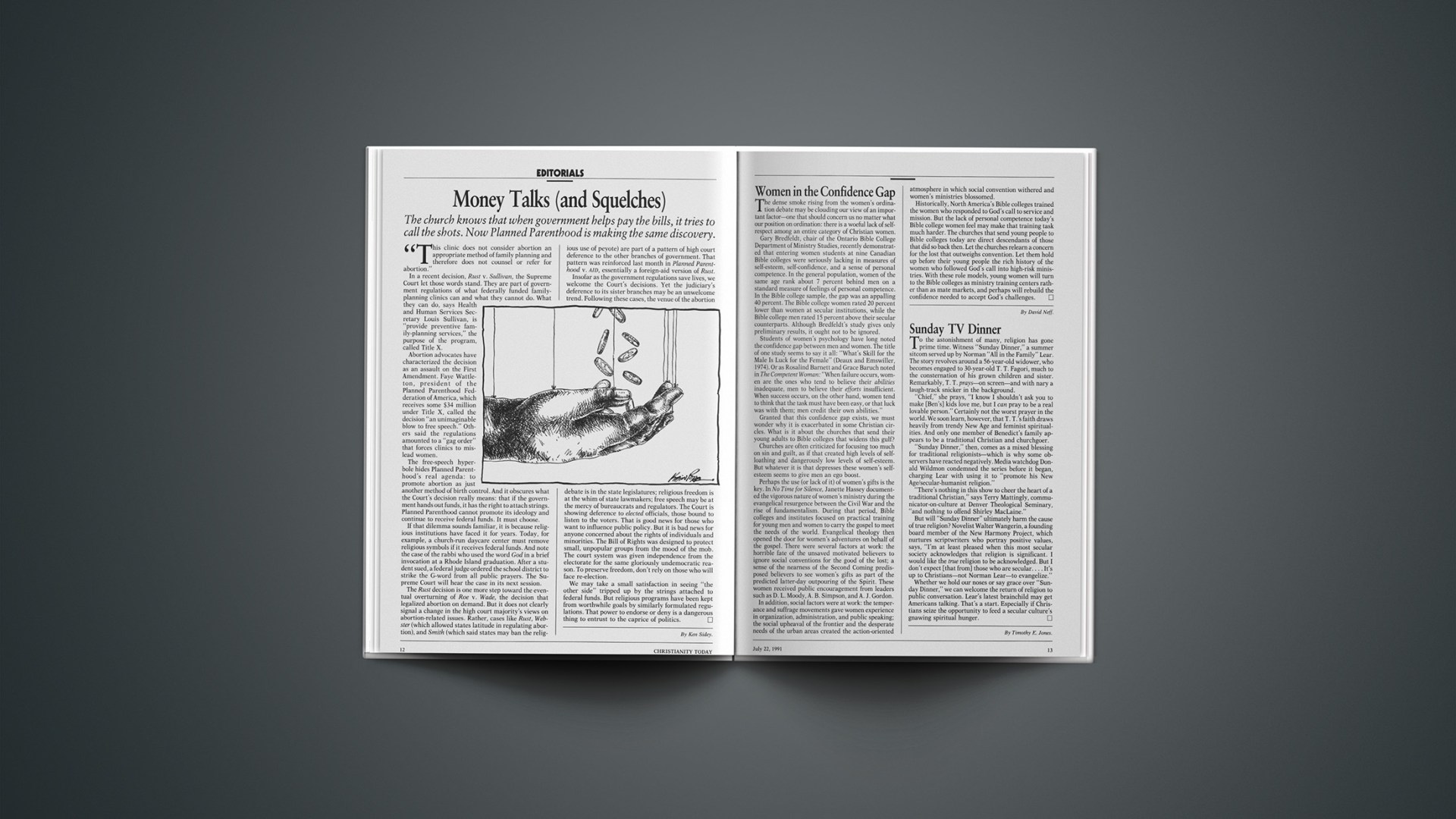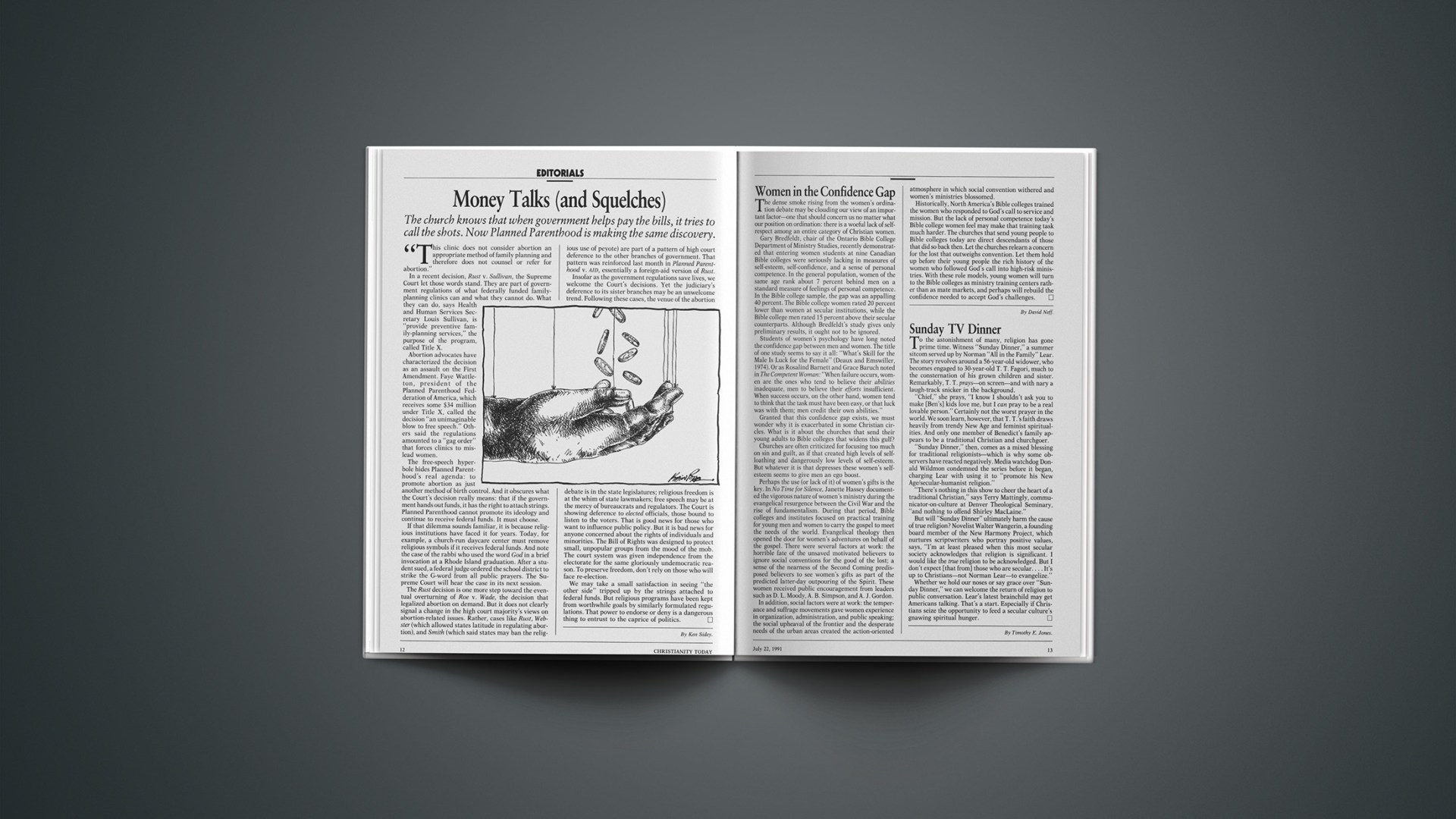Phil Aguilar, the Harley-riding, leather-jacketed, pony-tailed pastor of Orange County’s unconventional but wildly successful Set Free Fellowship, is “just like Jesus on this earth,” enthuses Trinity Broadcasting Network televangelist Jan Crouch.
That opinion, however, is far from unanimous, even among the California church leaders who have known Aguilar for years. In a recently compiled 318-page report, several of the 43-year-old pastor’s ex-supporters and associates charge that Aguilar employs peer pressure, intimidation, and Scripture twisting to ensure obedience from his flock; breaks apart families, separating those who are loyal from anyone who dares to ask questions; and enriches himself at the expense of his followers.
Aguilar’s critics concede that Set Free, where ushers dress like Hell’s Angels and hymns have been supplanted by “Christian rap,” is succeeding where lots of churches are failing or not even trying: presenting the gospel to society’s outcasts. But Ronald Enroth, an evangelical cult watcher and professor of sociology at Westmont College, says that far from being rehabilitated, the people who move into Set Free’s two-dozen group homes or retreats in California, Texas, and Illinois become virtual slave laborers.
In the 318-page report, Aguilar’s critics describe Set Free as a near-dictator-ship. Aguilar’s homes, according to the report, are ruled by “overseers” who tell followers when to eat, what to believe, what to do, and when to do it.
While strict rules are common in programs set up for recovering substance abusers, many of the people in Aguilar’s homes are neither addicts nor ex-convicts, but ordinary Christians attracted to Set Free by the unusual services or Aguilar’s charisma.
Aguilar told CHRISTIANITY TODAY the complaints have been generated by a small group of disgruntled ex-church members. He also blamed some of the controversy on a family dispute (some of his own relatives have joined the critics). ‘We’ve got two disgruntled families … and thousands of people whose lives have been changed by this ministry,” Aguilar told CT. He added that the whole controversy has been stirred, in part, by the fact that “we work with a lot of people that nobody else wants to work with.”
Past And Present
The accusations attracted the attention of the Orange County (Calif.) Register, which accused Aguilar of providing false or misleading information about his wealth and background.
Aguilar allegedly told Register reporters that he has taken a “vow of poverty” and that neither he nor Set Free owns anything of value. However, the paper says, state records show that Aguilar is the registered owner of a $10,000 motorcycle, and that either he or the church is listed as owner of more than 20 other vehicles, including two classic cars and a 1989 Chevrolet with the vanity license plates “BIKERPAS” (for “Biker Pastor”). The Register also raised questions about Aguilar’s expensive home and control of ministry money.
Aguilar has never made a secret of his preconversion days as a down-and-out drag user. But according to the Register, Aguilar’s past is considerably more troubled than he is apparently willing to admit. Aguilar described to the paper a 1976 arrest for “just slapping” a three-year-old child as nothing more than a “misdemeanor.”
According to the Register, the child was hospitalized, and police records show Aguilar was charged with two felonies in the case and was imprisoned after pleading guilty to one count of child abuse. Aguilar told CT the newspaper printed his remarks out of context. He said that in comparison to other more horrible acts he committed in his preconversion days, the incident paled as nothing more than a misdemeanor.
Set Free has been widely promoted by Trinity Broadcasting Network (TBN). President Paul Crouch has spoken of plans to set up Set Free retreats across the country. Residents of the Set Free ranch in Texas frequently work as manual laborers at Crouch’s country estate near Fort Worth, and church members regularly serve as telephone counselors at TBN.
Crouch portrays the charges as part of an ongoing battle between Christians and the secular media. Yet some of those looking into accusations against Set Free are themselves Christian leaders. Aguilar’s critics first took their complaints to Oden Fong, outreach pastor at the Southern California headquarters of Calvary Chapels, who had been referring drug addicts to Set Free.
Fong compiled the complaints into the report and confronted Aguilar. Fong then sent his report to the Christian Research Institute (CRI), a cult-watching center, which recounted the complaints in its newsletter.
Bob Lyle, vice-president of research at CRI, said he has met with some of the disgruntled ex-members. “It’s quite obvious that something is going on there. How widespread it is, we don’t know,” Lyle said, adding that CRI is refraining from drawing conclusions until more facts are gathered. Lyle said Aguilar has contacted him, and they plan to meet to discuss the complaints.
By Scott Fagerstrom and William Alnor.

